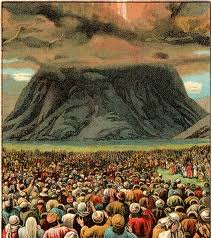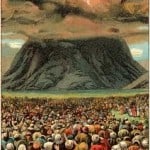We don’t know where the mountain is, but does it matter?
On Shabbat we will read Bamidbar, the first portion of the Book of Numbers, and on Sunday (Sunday and Monday in the Diaspora), celebrate Shavuot.
Mount Sinai takes center stage. There is one problem. We have no idea of its actual location. To be sure maps record Jabal Musa in Egypt as the mountain. But that is totally an archeological “guess”.
We have absolutely no Mesorah (handed down tradition, ed.) concerning its placement. We know with certainty the location of a myriad of Biblical experiences but have no idea of the location of the mountain which hosted the central motif of the Jewish People, Kabalat Hatorah – receiving the Torah.
Clearly, this is not by accident but by design.
The Ramban in his introduction to Bamidbar writes that the Torah will now deal at length with the Mishkan, the Tabernacle, our temporary spiritual center in the desert. Of all the information he could have given in this short introduction, strangely he chooses to compare the Mishkan to Mount Sinai and inform us of the similar relationship the people are to have with both the Mishkan and the mountain.
This comparison is a calculated comment. The Ramban is answering our question by presenting an important nuance.
The Mishkan is the new Har (Mount) Sinai. We are done with the mountain.
What was important was not the place of Har Sinai, but what took place on Har Sinai.
Indeed, the Ramban posits that “remembering Ma’amad Har Sinai”, is one of the 613 Mitzvot. But it is Ma’amad Har Sinai, the event that took place on the mountain, which is primary, not the geographic location. (Especially since it was not in Eretz Yisrael, a topic for another discussion).
The Mishkan served as the center piece of a Torah Society on the move. A portable Har Sinai. What is astounding is that the life and times of the Mishkan takes up an inordinate amount of space in the Torah (ten Parshiot in the Book of Numbers, Sefer Bamidbar!) and yet it too suddenly disappears. There will be other “Har Sinais”. The two Batei Hamikdash, Batei Knesset (synagogues), the Bayit Hayehudi (the Jewish home) and ultimately – the third Temple, Bayit Shlishi.
What was important was not the place of Har Sinai, but what took place on Har Sinai.
It might surprise you to know that Mark Twain understood this. In the 1800’s, The Boston Globe advertised a pilgrimage to the Holy Land, the grand finale being to scale Mount Sinai and read the 10 Commandments atop the mountain. The price of this sea-mission was exorbitant and could only attract the rich and famous. None-the-less, the paper attracted many potential participants.
Twain wrote a letter to the Globe which put a sudden end to the expedition. He wrote: “Instead of spending a fortune on this trip to climb Mount Sinai and reciting the 10 Commandments on the mountain’s peak, I have a better idea. Save your money, stay home and keep the Commandments in Boston.”
“Chochma bagoyim ta’amin” (Believe there is wisdom among the non-Jewish nations, a Talmudic saying, ed.)
Mark Twain got it; but we have it (the Torah I mean!)
May we all enjoy a meaningful Kabbalat Hatorah this Shavuot by renewing our commitment to learning and living Torah where ever we are.

